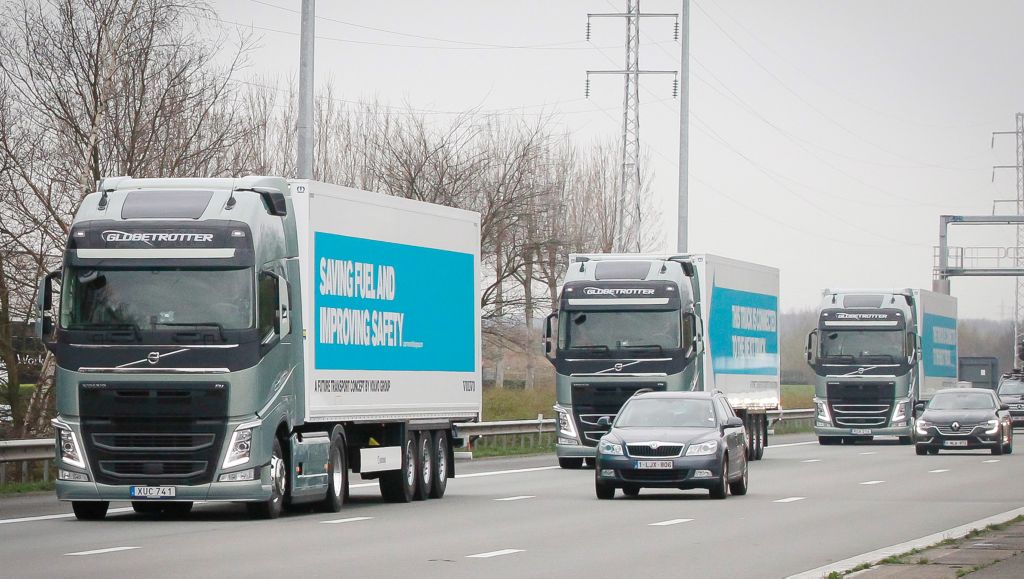Successful journey for Volvo’s truck convoy through Europe


“It has been fantastic to see people’s reactions. In Denmark, families were sitting with picnics along the side of the road to see us drive by,” says Anders Kellström, Project Manager for the Volvo Group’s participation in the EU Truck Platooning Challenge. “We drove in a convoy for over 1,500 km on public roads and gained a lot of great experience, not just about the technology but also about traffic environment. Everything went totally according to plan, which is a great feeling.”

Ben Weyts, the Flemish minister of transport , get firsthand platooning experience.
The purpose of the journey was to discuss and highlight the changes required in European transportation legislation that would facilitate the introduction of platooning. It is currently not possible to utilize the advantages of platooning on Europe’s roads, since legislation in the various countries governing the driving distance between trucks differs.
“We have now created a unique collaboration in terms of future transport solutions that goes beyond both national and organizational boundaries,” explains Andreas Svenungsson, Head of Public Affairs at the Volvo Group. “We note that there are varying interpretations of laws and provisions in different countries with regard to self-driving vehicles, but we feel that the tangible collaboration we have now commenced is an important step toward increased harmonization and more efficient transportation.”
Platooning involves trucks driving closely behind each other while communicating wirelessly. The vehicles’ fuel economy is improved as a result of the reduction in drag. Drag accounts for up to 25% of a truck’s total fuel consumption, and the closer the trucks drive to each other, the greater the fuel-saving potential. By communicating with each other wirelessly, the trucks automatically match each other’s speed and braking. This means that, in principle, reaction times is reduced to zero when braking. This in turns leads to improved safety and a reduced “accordion effect” linked to traffic congestion.
Journalists who would like additional information, please contact Kina Wileke on +46 (0)31 323 7229 or +46 (0)765 537229.